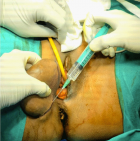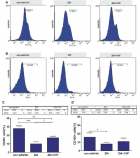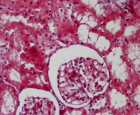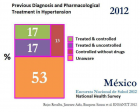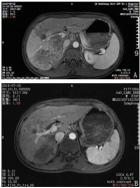About University Medical Center Göttingen
University Medical Center Göttingen
Articles by University Medical Center Göttingen
Long-term results for post-interventional systemic heparinization following angioplasty of peripheral vessels
Published on: 15th June, 2020
OCLC Number/Unique Identifier: 8612480354
Objective: The long-term outcome of percutaneous transluminal angioplasties is mainly determined by restenoses, either by progression of the underlying disease or by intimal hyperplasia. Pharmacological substances on the one hand and the implantation of stents on the other have been developed with the intention of preventing precisely this complication. While patients are treated after PTA of peripheral vessels with different low-molecular-weight heparins, the indication for stent implantation is determined individually rather by experience. The aim of this study was to determine gender-specific risk factors of long-term outcome after percutaneous transluminal angioplasty (PTA) of peripheral vessels with or without stentimplantation.
Methods: In the present study, we examined the long-term results of percutaneous transluminal angioplasty (PTA) of peripheral vessels. Between 2007 and 2017, in total, 3,276 patients underwent PTA with or without stent implantation in our clinic. All patients were treated postinterventionally for 48 hours with 25,000 IU heparin (Unfractionated Heparin (UFH), heparinsodium-Braun, 25,000 I.E./5 ml, 2 ml/h) monitored by the partial thromboplastin time and subsequently underwent a control investigation every 6 months. The endpoint of the study was determination of symptomatic stenosis larger than 50% that required reintervention.
Results: 239 (68.2% with mean age 68.02 years) male patients and 111 female patients (31.71% with mean age 62.92 years) were evaluated with complete follow-up. A total of 470 PTAs were performed on male patients and 213 on female patients in multiple interventions. The majority of patients at the time of treatment were in stage IIb according to the classification of Fontaine (81.6% of male patients and 68% of females). In our sample, peripheral arterial disease stage III and IV according to Fontaine classification occurred twice as frequently in female patients as in male patients (stage III in 12.6% in female versus 6.1% in male, and stage IV in 18% in female versus 8.9% in males). In both groups, the femoral superficialis artery was most frequently dilated (64 cases, 30% in female and 155 cases, 32.9% in male), followed by the iliacal communis artery (46 cases in female and 99 cases in male, both with 21.5%). A balloon angioplasty of the tibialis anterior and posterior arteries was performed twice as frequently in female patients as in male patients (28 cases with 13.1% of tibialis ant. artery in female versus 32 cases with 6.8% in male patients, and in 17 cases with 7.9% of tibialis post. artery in female versus 16 cases with 3.4% in male patients). In this study, without consideration of gender, patency rates of 79% after 2.5 years, 67% after 5 years, 49% after 7.5 years and 37% after 10 years were determined for PTA without stent implantation. Between the 7th and 10th year in follow-up, the cumulative patency rates for stent implantation was 49%, whereas it was 31% for PTA alone. The results of this study show that the stent assisted PTA`s of comm. artery and external iliacal artery are significantly independent of risk factors better than the femoral vessels, and these in female patients better than in male patients. Male patients do not benefit significantly from stent implantation in the long term. As the COXI and II regression analyses show, gender-linked results are most evident for renal insufficiency and diabetes mellitus, and less pronounced also for the number of open lower leg vessels.
Conclusion: Under consideration of gender and risk factors, while male patients with diabetes mellitus, renal insufficiency and/or poor run-off did not benefit from stent implantation in the long-term, female patients with similar risk factors showed higher patency rates after stent therapy. In addition, the long-term results after PTA of femoral superficialis artery and poplitea artery are significantly worse than PTA of the pelvic vessels in both genders.

HSPI: We're glad you're here. Please click "create a new Query" if you are a new visitor to our website and need further information from us.
If you are already a member of our network and need to keep track of any developments regarding a question you have already submitted, click "take me to my Query."







